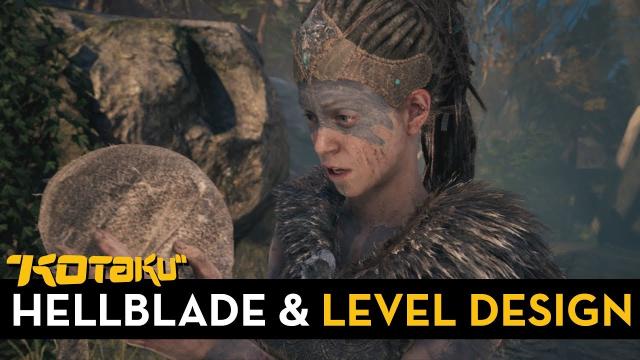Focusing on themes of grief and trauma, Hellblade: Senua’s Sacrifice employs a number of level design and mechanical tricks to help players empathise with the main character’s struggle. We take a closer look in this critical video.
Here’s a transcript for those of you unable to watch the video:
Hellblade: Senua’s Sacrifice tells the story of a warrior on a quest to revive her dead fiance, all while struggling to manage her mental trauma. In order to capture Senua’s mental state, the game uses specific mechanics and scenario design to ground the player in her headspace. By subtly tweaking level design or crafting intense scenarios, Hellblade recreates the sensations of altered perception or anxiety and uses mechanics as a metaphor for mental illness.
Every area of the game corresponds to a different god that Senua must face on her journey to revive her lover Dillion. The first is the realm of Valravn, god of illusion. To simulate the sensation of derealisation and confusion, this area is full of gates that change the environment as Senua passes through them. Walls crumble or ladders appear. Navigation through this area is confusing, and tracking back and forth until a path appears gives the sensation of using ritual or compulsion to deal with that. It’s frustrating and confusing to look for the right gate to pass to. The level design creates the same feelings in the player as Senua must be having.
This is contrasted with the realm of Surt, the fire giant. If Valravn’s realm was designed to simulate confusion, this area is focused on anxiety. Senua runs from illusory fire that constricts potential paths and forces the player to rush forward to avoid dying. Broadly, these sequences can be read as panic attacks. Smoke imagery evokes the idea of difficulty breathing, while the encroaching fire simulates how hard it is to prevent an episode once it starts. While Hellblade has combat, much of this segment is spent running, as it is too early for Senua to push back against her various fears.
Woven into the fabric of the level design are smaller touches meant to complicate the player’s relationship to the game. Throughout the game, Senua is dogged by a chorus of voices that alternatively mock or encourage her. The audio design for these voices is binaural, slipping back and forth in a player’s headphones or monitor outputs. These voices often annoy more than they adequately simulate sensations of mania or schizophrenia, but their intrusive presence nevertheless creates a sense of agitation. Additionally, the game claims that if Senua dies enough, a curse will crawl up her arm and eventually kill her permanently and erase your save file. This appears to be a lie; the game never really deletes your save, but the added worry is another emotion players manage and accept.
Acceptance is the key. It becomes clear that much of Senua’s condition is inherited by her mother and compounded by abuse from her zealous father. To simulate the process of healing and integration, a dark sequence plunges Senua into a realm where she needs to work through darkness. The screen is black; players turn Senua and move forward when their controller vibrates. Leaving this realm leads to more combat-focused sequences. Having navigated the darkness, Senua is ready to fight back.
Narratively, this can seem reductive. Boiling down mental illness to a Campbellian Hero’s Journey fails to provide the nuance required to say anything conclusive. Is the rot on Senua’s arm a representation of her growing self-doubt? Is it a bruise left by her abusive father? It is a literal mark of shame from the gods? It ends up being all of these things, because Hellblade shies away from anything too definitive. In some ways, that’s disappointing; Hellblade doesn’t necessarily have much to say about mental health. But the mechanics often succeed emulating emotional states. Hellblade is a mood piece. Confusion, panic, depression. Players will experience all of these things and more.
In the final moments of the game, Senua must stop fighting or else be stuck fighting infinitely spawning enemies. Senua learns to integrate her pain and hurt, accepting it as an essential part of herself. It’s another metaphor through mechanics: Learning to put down the sword (or drop the controller) and walk away from the demons. Hellblade‘s message isn’t radical: The most difficult battles are fought in the mind. Through some smart design, we get to feel a small portion of that struggle.

Leave a Reply